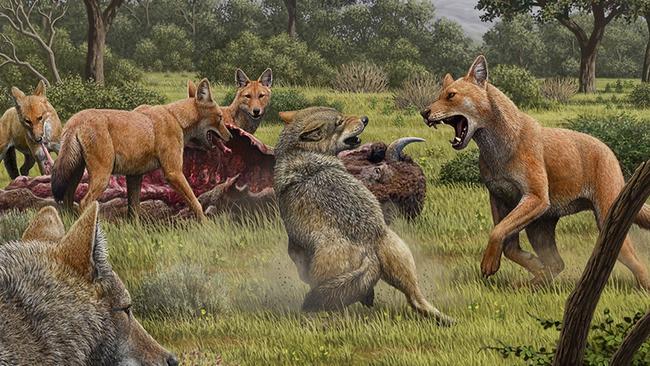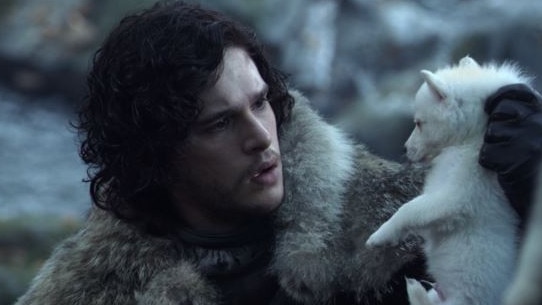Dramatic twist in dire wolf story revealed in Adelaide University research
They were made famous by Game of Thrones but there’s been an unexpected twist in what we know of dire wolves in the real world.

SA News
Don't miss out on the headlines from SA News. Followed categories will be added to My News.
Dire wolves, made famous in the television series Game of Thrones, are more mysterious than first thought, new research led by Adelaide University has uncovered.
Researcher have discovered despite long being regarded as closely related to grey wolves, dire wolves split off from other wolves nearly six million years ago and were only a distant relative of today’s wolves.
Dire wolves were so different from other canine species like coyotes and grey wolves that they were not able to breed with each other, according to new research published in Nature – the world’s leading multidisciplinary science journal.
Dire wolves are the sigil of House Stark on Game of Thrones, and kept as family pets on the hugely successful television program.
According to National Geographic the extinct wolves are played, in the series, by Northern Inuit dogs (a crossbreed related to huskies and German shepherds that was selectively bred to resemble wolves) and an arctic wolf.

Co-lead author Kieren Mitchell, from The University of Adelaide’s Australian Centre for Ancient DNA, said the first time ancient DNA has been obtained from dire wolves, revealing a complex history of these ice age predators.
“Dire wolves are sometimes portrayed as mythical creatures – giant wolves prowling bleak frozen landscapes – but reality turns out to be even more interesting,” Dr Mitchell said.
“Despite anatomical similarities between grey wolves and dire wolves – suggesting that they could perhaps be related in the same way as modern humans and Neanderthals – our genetic results show these two species of wolf are much more like distant cousins, like humans and chimpanzees.
“While ancient humans and Neanderthals appear to have interbred, as do modern grey wolves and coyotes, our genetic data provided no evidence that dire wolves interbred with any living canine species.
“All our data point to the dire wolf being the last surviving member of an ancient lineage distinct from all living canines.”
The University of Adelaide helped lead the research with Durham University in the UK, Ludwig Maximilian University in Germany, and the University of California Los Angeles in the US.
For the first time, the international team sequenced the ancient DNA of five dire wolf sub-fossils from Wyoming, Idaho, Ohio, and Tennessee, some dating back to over 50,000 years ago.
Their analyses showed that dire wolves and grey wolves were in fact very distant cousins.
Although dire wolves overlapped with coyotes and grey wolves in North America for at least 10,000 years before their extinction, researchers found no evidence that they interbred with these species.
The researchers suggest that their deep evolutionary differences meant that they were likely ill equipped to adapt to changing conditions at the end of the ice age.



